Matador Network's Blog, page 600
August 30, 2021
Is the travel insurance with your Chase Sapphire card actually any good?

The Chase Sapphire Preferred and Reserve offer some of the best benefits in the credit card travel insurance game today. Both Chase Sapphire cards offer a variety of well-known, and well-loved, benefits like trip cancellation and interruption insurance, delayed luggage reimbursement and rental car protection. The Chase Sapphire reserve goes a step further with protections like emergency medical and dental insurance and travel accident insurance that we’ll focus on.
But unless you’re reading the fine print, how do you know if it’s any good? In this article, we’ll tell you everything you need to know about who is covered, what is covered and most importantly, what’s not covered. Before we jump in, there are few topics as boring as credit card travel insurance, so try to stay with me as we dive into the only subject with a lower rating on Rotten Tomatoes than Paint Drying: The Sequel.
Who is covered?Knowing who is covered in the event of an issue during travel is critical. The Chase Sapphire cards both cover the cardmember and immediate family (spouses and children). That means that even if the cardholder’s family member is not an authorized user, they are still covered if the trip was booked on the credit card. Even better? If you, as the cardmember, book a flight for your spouse, your spouse is fully covered during their trip without you.
What is covered?The coverages for both the Sapphire Reserve and the Sapphire Preferred are similar when looking at the trip interruption and baggage benefits. However, the key differences between the Reserve and Preferred arise when we talk about medical evacuation and emergency medical and dental.
Chase Sapphire ReserveBaggage delay: Up to $100 reimbursed per day, for up to five days, if your baggage is delayed more than six hours.Lost or damaged baggage: $3,000 per passenger, however, only $500 per passenger for jewelry, watches, cameras, video recorders and other electronic equipment.Trip delay reimbursement: Up to $500 per ticket if you’re delayed more than six hours or require an overnight stay.Trip cancellation and interruption protection: Up to $10,000 per person and $20,000 per trip, for prepaid non-refundable travel expenses.Emergency medical and dental benefit: Up to $2,500 for medical expenses when on a trip more than 100 miles from home.Medical evacuation benefit: Up to $100,000 for medical services and transportation in the case of emergency evacuation, when on a trip of five to 60 days, and traveling more than 100 miles from home.Travel accident insurance: Up to $1,000,000 for Common Carrier Travel Accident Insurance or $100,000 for 24 Hour Travel Accident Insurance.Chase Sapphire PreferredBaggage delay: Up to $100 reimbursed per day for up to five days if your baggage is delayed more than six hours.Lost or damaged baggage: $3,000 per passenger, however, only $500 per passenger for jewelry, watches, cameras, video recorders and other electronic equipment.Trip delay reimbursement: Up to $500 per ticket if you’re delayed more than 12 hours or require an overnight stay.Trip cancellation and interruption protection: Up to $10,000 per trip for your prepaid, non-refundable travel expenses.Emergency medical and dental benefit: Not available.Medical evacuation benefit: Not available.Travel accident insurance: Not available.The key differentiator is the medical benefitsWhile there are a few differences when looking at specific coverage value or terms, the key differentiator is the medical benefits. If you are banking on being protected while abroad, it is critical to understand your protections. The Chase Sapphire Preferred does not offer the emergency medical and dental nor the medical evacuation and accident insurance.
The emergency medical and dental benefit is something that you don’t find on many credit cards, other than the Chase Sapphire Reserve. While more comprehensive coverages exist that you can purchase through a third party insurance company, Chase includes up to $2,500 for emergency medical or dental services during a covered trip, and up to $75 per day, for up to five days at a hotel if required. This comes with a $50 deductible and includes emergency medical and dental services, hospital room, ambulance, medicines, and supplies. Specifically, this coverage only applies to trips 100+ miles away from your home billing address, which will easily apply to most travel. However, the only caveat here is the emphasis on “emergency.” Your medical issue must be deemed an emergency by licensed medical personnel, and state that you are unable to wait until you arrive home to address the issue.
You still with me?
The medical evacuation benefit is another bonus that you won’t find on many cards. If you or a family member finds themselves needing a medical evacuation, the benefit may provide up to $100,000 in coverage. The fine print here is that the covered trip must be at least five days in length, but not more than 60 days, and you must be more than 100 miles from home.
But there’s an important catchThis particular coverage is not a reimbursement. So, that means you must call the travel benefits hotline to initiate the transport and it must be approved by a licensed medical expert in your location. Basically, if you get stranded on the side of Annapurna, on that Nepalese trek you’re crossing off your bucket list, your first call is going to be to a Chase’s 1-800 number. Food for thought.
Lastly, is travel accident insurance, and while I hope you will never need to experience it, knowledge is power and it’s important to be aware of your coverage. If you or a covered traveler dies or dismemberment occurs on a common carrier, the card provides up to $1,000,000 in coverage. It’s important to keep in mind that this benefit only applies if you are in an accident with a “common carrier”, which is defined as a motorized vehicle (plane, train, car for hire, boat for hire or courtesy transfers to and from airports/ports) during your covered trip. That does not include rental vehicles.
What is not covered?Now, onto the most important part of any trip: knowing what is not covered under these credit card travel insurance policies.
The most important thing to remember is that these insurance policies are meant to be secondary to any primary coverage. This means that you will only receive the excess dollar amount beyond what the airline or insurance policies give you.
Let’s take an exampleYour flight is canceled and the next flight out isn’t until the morning. The airline gives you a hotel room and a $12 meal stipend for the night. However, because you miss the first night on your vacation, you are still paying for that hotel room at your destination. Because of your flight delay you are losing out on the hotel room cost, let’s say $300. On top of that, you spent $50 on food, not $12. When you file a claim for the trip interruption benefit, you will receive what you prepaid (that $300 hotel room) plus your food cost ($50), minus the $12 stipend the airline provided.
The same applies for medical insurance. You will receive the excess beyond what your primary coverage supplies if you had additional expenses. It’s also critical to keep in mind that not all events will be covered. Common exclusions to all of these policies involve medical issues while engaging in extreme sports, travel to “unsafe” countries such as Afghanistan, medical issues due to preexisting conditions and pregnancy, and weekend trips of less than five days or extended trips of 60+ days.
The importance of documentationLastly, documentation is often the make or break when it comes to reimbursement. While the medical evacuation must be done at the time of incident, most of the benefits are reimbursements. This means the burden falls squarely on you to provide everything you need, and more, to get the claim through quickly.
I have personally used a few of the personal goods protections, like the return protection and purchase protection, and I can tell you how ridiculously hard it actually is to get the money back. You might think a receipt is enough, but unless you overshare and provide receipts, images, bank statements and more, the claim is often denied at first based on “lack of evidence”. Documentation, when it comes to any of the travel and medical claims, is even more important.
Here’s my advice: keep everything and file a claim. And I mean it — receipts for food, receipts for purchases, hotel reservations, itineraries, and flight receipts. Get everything into the claim system as soon as possible. Don’t question if you have provided too much information, in this case, more is better.
How does Chase stack up against its competitors?The Chase portfolio does have excellent benefits overall, and the Chase Sapphire Reserve is going to most closely align to the American Express Platinum travel benefits. However, it’s important to note that AmEx does not offer the medical or dental emergency coverage, nor do they offer travel accident insurance, therefore, putting it more in the category of the Preferred card. They do, however, provide the evacuation benefit and the standard travel benefits like trip delay, trip cancellation and auto rental protections. Before you book your next trip, be sure to confirm the benefits you have access to based on the card you pay for your trip with.
What’s the verdict?The credit card travel insurance provided by Chase Sapphire Reserve is going above and beyond what you will find with many of its competitors. While it’s a huge weight off to know that there are a number of benefits that cover you while traveling, it’s also important to know those limits. There are a number of travel insurance companies, like HTH Insurance, that cover virtually any travel issues or cancellations with a comprehensive policy if you’re looking for 100% protection, even if it’s at a high price tag.
For the normal vacationer, the Chase Sapphire Reserve is going to provide the most comprehensive option of credit card travel insurance and can provide great relief when things go wrong. Just remember, read the fine print, document everything and file your claims quickly. 
The post Is the travel insurance with your Chase Sapphire card actually any good? appeared first on Matador Network.
The most comfortable, chic, and affordable travel clothes, according to a stylist

We hope you love the products we recommend! Just so you know, Matador may collect a small commission from the links on this page if you decide to book a stay. Listed prices are accurate as of the time of publication. See our full Advertiser Disclosure here.
Fashion is my passion, but sometimes the latest trends and best tailoring can be a little uncomfortable. It’s fine to suffer for style when you’re just heading out for a quick dinner date, but it’s not something you want to do when you’re on the move.
I’ve worked in the fashion industry for years as an editor and stylist. When my work requires travel, I have to find the most comfortable travel clothes to show off my personality while keeping my budget in check and luggage light. It’s not an easy task, but it can be achieved by investing in staples. From layers, stretchy denim, styled fleeces to light-weight blazers, here’s my selection of comfortable travel clothes that make sure you disembark a flight looking your best.
1. Durable denimWhen it comes to comfortable travel clothes, a good pair of jeans should be the first thing you think of. Trends change constantly, but denim will always be a staple of any wardrobe. However, not all jeans are created equal. Cheap, thin denim not only wears down quickly but needs to be washed more. Do yourself a favor and invest in a high-quality pair of jeans for your travels. I am a big fan of Japanese and organic denim. These fabrics will offer you comfort, longevity, and easy cleaning when you’re on the road.
Women’s Everlane Japanese Stretch Jeans
Photo: Everlane
Price: $88
Men’s Everlane Organic Jeans
Photo: Everlane
Price: $88
2. Black staple peicesCoco Channel created the “little black dress” to give the world a clothing item that would go with anything. Black is still a must-have in any closet. It’s flattering on all figures, goes with all colors, and is easy to keep clean. For easy styling, always pack a few black items to mix and match with. For extra flair, seek out black pieces that have unique details like buttons, interesting hemlines, or a textured fabric. It’s the little things that make all the difference.
Women’s AlvaQ Button Dress
Photo: AlvaQ/Amazon
Price: $26.89
Men’s Everlane Henley Shirt
Photo: Everlane
Price: $45
3. Jackets for layeringNo matter what time of year you’re traveling, you should always bring a light jacket. Picking a color that is easy to match will be incredibly helpful when putting together multiple outfits. Black has always been a staple for this reason, but this year has seen a rise in the popularity of earth tones and browns. To get the most use out of this jacket, you’ll want to pick a fabric that is both warm and breathable. Cotton and flannel are safe and affordable choices that won’t wrinkle too much.
Women’s prAna Nikit Jacket
Photo: prAna/REI
Price: $119
Men’s prAna Dock Jacket
Photo: prAna/REI
Price: $129
4. Grommet beltsOnce a staple of the punk movement, these belts have now entered the mainstream. Grommet belts are known for their double-pronged buckles and holes that go all the way around. The classic grommet belt has silver eyelets in each hole, but the modern equivalent is often more simple. By having so many holes, they offer many styling options. You can wear them around your waist, hips, or even use them as a bag handle in a pinch. If you like to spend a good portion of your trips eating delicious food, these belts will come in handy when you need to loosen them up a bit.
Women’s Bouble Grommet Belt
Photo: Etsy
Price: $12
Men’s Dickies Leather Belt
Photo: Dickies/Amazon
Price: $12.99
5. A styled fleeceWhen it comes to fashion, fleece gets a bad rep. We all know that it’s one of the coziest fabrics you can wear, but for many, it conjures up images of camping and slippers. Luckily, there are many styled options that offer both form and function. Wear it on the plane when the AC is pumped up to high, on a hike to be photo-ready, and with a good pair of jeans to walk around a chilly city.
Women’s North Face Fleece Jacket
Photo: The North Face/REI
Price: $148
Men’s Mountain Hardwear UnClassic Fleece Jacket
Photo: Mountain Hardwear/REI
Price: $120
6. Natural linenIn addition to warm layers, you need a few light and breathable pieces on your list of comfortable travel clothes. Nothing is better for heat than linen. Not only does it keep you cool, but it also helps you to look effortlessly stylish. It’s definitely a look most suited for the daytime, but with a few nice accessories you could transition it to a casual evening look as well. A tip for traveling with linen: If it wrinkles in your luggage, hang it up in the bathroom while you take a hot shower. The steam will get it back to looking its best.
Women’s Ecodesign Linen Set
Photo: Etsy
Price: $165
Men’s Faherty Linen Shirt
Photo: Faherty
Price: $168
7. A smart blazerThrow a nice blazer over a t-shirt and you instantly have a more stylish casual look. Throw one over a dress or button-up and you are ready to go to a five-star restaurant. Right now, the “dark academia” style is blowing up. It’s an aesthetic inspired by classic literature and gothic architecture. Wool blazers are a staple of the style and are going to be a huge trend when the fall comes. For travel, they have the added bonus of offering warmth and not wrinkling in your luggage.
Women’s Vittorio Boutique Blazer
Photo: Etsy
Price: $48
Men’s Goodthreads Blazer
Photo: Goodthreads/Amazon
Price: $80
8. Sleek lounge pantsThe first step of a vacation is transportation. Whether you’re taking a flight or a road trip, you’ll want something that’s incredibly comfy for your journey, but lounge-wear doesn’t have to be one-note. If you pick a sleeker option, you can pair them with a nice jacket and shoes for a daytime look. The key to finding pants that can achieve that is focusing on color and embellishments. You want to steer clear of patterns and logos and look for simple colors. Embellishments like pockets, racing stripes, and detailing around the hem can help to majorly elevate these pieces.
Women’s Aerie Leggings
Photo: Aerie
Price: $49.95
Men’s Banana Republic Joggers
Photo: Banana Republic
Price: $109
9. Sock sneakersIf you are planning a trip that involves activity as well as relaxation, a sneaker is a must. The recent trend of sock sneakers adds a cool twist to the classic shoe. A sock sneaker is known for having a rubber sole and a tight, knit casing for the foot. Not only do they make a statement, but they are extremely comfortable and breathable. Their flexible nature makes them easy to pack and most pairs are machine washable so they can look fresh on every trip.
Women’s Allbirds Wool Runners
Photo: Allbirds
Price: $98
Men’s Casbeam Knit Running Shoes
Photo: Santiro/Amazon
Price: $29.99
10. Chunky cardigansCardigans have often been viewed as a staple piece, mainly coming in solid colors with simple silhouettes. But with the knitting craze that came with quarantine, we are seeing bold, oversized cardigans making a splash in fashion. With celebrities like Harry Styles and Taylor Swift popularizing the style, you can expect to see it everywhere this fall. When packing a chunky cardigan, consider what base pieces you could layer it with. Since the cardigan will be your accent piece, it would look great over a pair of jeans and a plain t-shirt or even a little dress. Not only is it comfortable, but if you get lost in a crowd, you should be pretty easy to find.
Unisex Vorondolo Knitting Cardigan
Photo: Etsy
Price: $130 
The post The most comfortable, chic, and affordable travel clothes, according to a stylist appeared first on Matador Network.
August 27, 2021
Airbnb is giving temporary housing 20,000 Afghan refugees

After a tumultuous August, the Taliban seized control of Afghanistan, causing many Afghan refugees to flee the country. It’s estimated that there are already 2.2 million Afghan refugees in neighboring countries with 3.5 million more forced to flee their homes within the country’s borders, according to BBC News. These numbers are expected to rise. In an effort to do its part, Airbnb’s non-profit branch will be temporarily housing 20,000 refugees free of charge.
“As tens of thousands of Afghan refugees resettle around the world, where they stay will be the first chapter in their new lives. For these 20,000 refugees, my hope is that the Airbnb community will provide them with not only a safe place to rest and start over, but also a warm welcome home,” said Airbnb CEO and co-founder Brian Chesky in a press release.
The announcement comes after the organization had already given emergency funding and support to the International Rescue Committee (IRC), HIAS, and Church World Service. Airbnb hosts play a big role in offering the stays, but the organization recently announced that it would allow people who are not currently hosting to join the community to offer their homes.
“We’d like to thank our generous community of hosts and guests for reaching out and expressing interest in how they can support Afghan refugees through http://airbnb.org,” the company tweeted.
In the past, the nonprofit Airbnb organization has assisted in offering homes after natural disasters including the wildfires in California, the Mexico earthquakes, and various hurricanes worldwide. The Afghan refugee program is a part of the $25 million Refugee Fund announced in June, which is backed by Airbnb, Brian Chesky, and anyone willing to donate. 
The post Airbnb is giving temporary housing 20,000 Afghan refugees appeared first on Matador Network.
This laidback European country has the fittest people on earth

It’s always important to make sure you’re getting enough physical activity to stay healthy. But now more than ever, exercise is an important way to stay healthy both mentally and physically against COVID-19. One recent study even suggested the lack of physical activity could more than double the risk of dying from the coronavirus.
As life gets busier and working from home grows in popularity, city-dwellers could find it more difficult to stay on the move and ensure an active lifestyle. According to the World Health Organization (WHO), more than a quarter of the world’s adult population is not active enough, failing to reach “at least 150 minutes of moderate-intensity, or 75 minutes vigorous-intensity physical activity per week.”
So, the sporting goods company, Reebok conducted a study to see which cities were up and moving, and the answers might surprise you. The study used five metrics to determine each city’s ranking including the cost of a monthly gym membership, the number of people walking and cycling to work, the level of insufficient physical activity country-wide and the obesity rate country-wide, and other additional environmental metrics to determine the most actives cities (air quality and public green spaces).
The number one city was the capital of the Netherlands, Amsterdam. The average gym membership price is 41.87 euros ( about $50) with 17.4 percent of the population using a membership. But over 45 percent of workers in the city cycle to work, and 13 percent of the city is made up of green spaces in which to exercise and relax outside. The obesity rate in Amsterdam is just over 20 percent.
Copenhagen, Denmark, placed second with an obesity rate of just under 20 percent. The cost of a gym membership rivals Amsterdams at 38.38 euros (about $45) with a little under 19 percent showing up for workouts. 25 percent of the city is public space which is double that of Amsterdam, and 40 percent of cyclers make their way to work.
Rounding out the top three is Helsinki, Finland. Only 14 percent of people cycle to work in Finland, but the percentage of green spaces reaches 40 percent. The average cost of a gym membership is 40.71 euros ($48) and about 17 percent of the population takes advantage of their plentifulness.
Here’s a look at the top 20 cities around the globe that measure up.
Amsterdam, The NetherlandsCopenhagen, DenmarkHelsinki, FinlandOslo, NorwayValencia, SpainMarseille, FranceVienna, AustriaStockholm, SwedenBerlin, GermanyMadrid, SpainPrague, Czech RepublicBarcelona, SpainVancouver, CanadaZurich, SwitzerlandVilnius, LithuaniaOttawa, CanadaGeneva, SwitzerlandMontreal, CanadaLjubljana, SloveniaDublin, IrelandCheck out the full study to see which cities shape up. 
The post This laidback European country has the fittest people on earth appeared first on Matador Network.
Woman sentenced to jail for walking on thermal ground in Yellowstone National Park
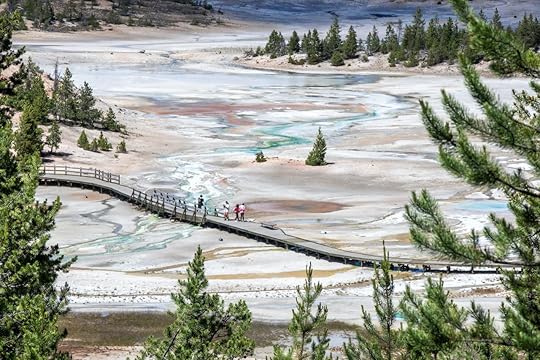
A Connecticut woman was sentenced to seven days in jail for walking on thermal grounds at Yellowstone National Park.
According to a press release issued by the national park, in July, Madeline S. Casey and two others got off the boardwalk and walked on the thermal ground around the park’s Norris Geyser Basin.
People who witnessed the incident took photos and videos of the three. Norris Geyser Basin is well marked with signs ordering visitors to stay on the boardwalk.
“Boardwalks in geyser basins protect visitors and delicate thermal formations,” said Yellowstone National Park Public Affairs Officer Morgan Warthin. “The ground is fragile and thin and scalding water just below the surface can cause severe or fatal burns. More than 20 people have died from burns suffered after they entered or fell into Yellowstone’s hot springs.”
On August 25, 2021, the 26-year-old was sentenced to spend seven days in jail. Casey was also ordered to pay a $1,000 fine, $40 in fees, and a $1,000 community service payment to the park’s Forever Geological Resource Fund. She is banned from entering the park for two years.
Incidents involving tourists who ignore signs and park’s advice happen regularly at Yellowstone National Park.
In August 2020, a man was caught trying to cook chickens in a Yellowstone hot spring and was banned from the park.
In May 2020, a woman was attacked by a bison after getting too close to the animal. That same month, a woman suffered burns after trespassing, walking on thermal ground, and falling into a thermal feature. 
The post Woman sentenced to jail for walking on thermal ground in Yellowstone National Park appeared first on Matador Network.
North America’s biggest wine museum collection is planned for Colorado
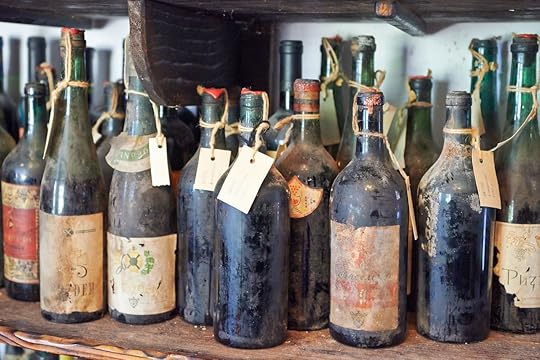
There are wineries in all 50 states, but there’s a good chance that California comes to mind when you think of the epicenter of wine and wine culture in the US. When it comes to wine history, however, people may soon start looking to Colorado.
Zoning and logistics for a museum of wine was recently discussed in Palisade, Colorado, that will house the largest wine artifact collection in North America, the Grand Junction Daily Sentinel reports. Scott High, the owner of Colterris Winery in the Centennial State’s small-but-growing wine region, proposed the museum. High and his wife Theresa would also contribute the artifacts to be shown from their own collection, including centuries-old wine bottles and more than 18,000 wine-related objects.
The museum would, naturally, also include a wine bar with a rooftop deck. Sipping on a glass or two of local wine while browsing the artifacts from centuries past is the perfect follow-up activity to a bike tour of the 60-plus wineries in the area.
“What they’re proposing, this museum, unless you have had any kind of exposure to the kind of items that will be in this museum, it’s something that is going to attract many, many, many people,” former Palisade mayor Roger Granat told the Daily Sentinel.
Looking back at the long relationship between humans and wine can be informative, entertaining, and, in some cases, applicable to the present day (Italy’s “wine windows” that date back to the days of the black death, for example). Putting such a notable collection on permanent display in Colorado could provide a huge boost to the young wine region — and provide the perfect excuse for anyone looking to plan a winery trip complete with both history and delicious modern wines.
The post North America’s biggest wine museum collection is planned for Colorado appeared first on Matador Network.
Win a free trip to Munich’s 2022 Oktoberfest if you find a Sam Adams golden bottle
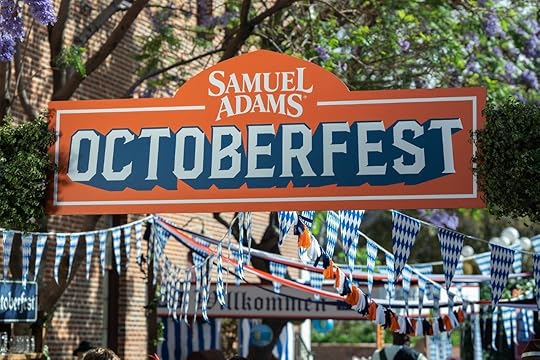
In 2020, the famous Munich Oktoberfest was canceled for just the 25th time in two centuries. And now, in 2021, it’s canceled for the 26 time due to the continued threat of coronavirus variants. Yet 2022 is still on the calendar, and you could win a free trip with three friends if you find the golden bottle ticket in a pack of Sam Adams Octoberfest.
Boston Beer Company (which owns Sam Adams) is selling specially marked 12 packs of Sam Adams Octoberfest. Five of those will have a golden bottle, and each golden bottle is a trip to Munich’s Oktoberfest 2022. The winners (and three friends each) will get a round-trip economy flight to Munich, admission to four Oktoberfest activities, two rooms for four nights in Munich, and one $1,000 gift card for expenses. If you’re the antsy type who wants to stay up to date on which bottles have been found, Sam Adams has a tracker that shows which have been found already (none as of publish time) and how many days are left (the contest ends in November).
One restrictive note: the contest isn’t open to those in Alaska, California, Hawaii, Missouri, New Jersey, Pennsylvania, Texas, Utah, and Vermont and residents of Puerto Rico and United States territories and possessions.
If you do win, just don’t be one of those people who contributes to the 100,000 steins attendees try to steal. If you aren’t one of the few lucky winners (or the friend of a lucky winner) you can always bookmark one of the great US Oktoberfest celebrations for 2022.
The post Win a free trip to Munich’s 2022 Oktoberfest if you find a Sam Adams golden bottle appeared first on Matador Network.
A trippy light festival will turn this city in upstate New York into an outdoor art gallery
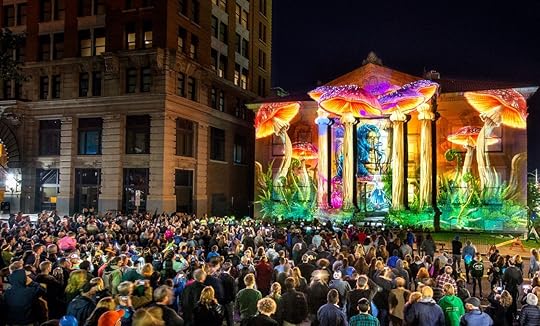
The fantastical and transportative LUMA Projection Arts Festival is coming back this fall, and the show will be bigger and brighter than ever.

Credit: LUMA Projection Arts Festival
LUMA is an immersive outdoors art festival where artists project photos and videos and 3D animation on the historic buildings of Binghamton in upstate New York.
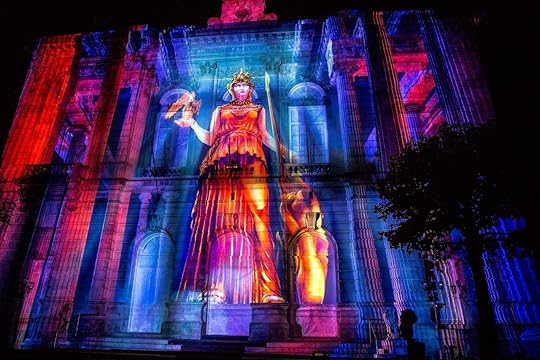
Photo: Mark Doyle via the LUMA Projection Arts Festival
This year’s LUMA will take place on September 10 and 11, and feature artists from around the world, including Sila Sveta from Moscow; Mindscape from Bucharest; Maxin10sity from Budapest; LightHarvest from Brooklyn; and Freckled Sky/Invisible Showman from Chicago.
According to Luma’s website, there will be four performances at the festival this year:
Cheerful Nightmares:“A trip to your favorite amusement park is sure to thrill–but what happens when the park takes the thrills a bit too far–and the amusements take on a life of their own? Maxin10sity transforms 95 Court in a tribute to a classic county carnival with a frightful twist–one that has you asking if the rides are only there to quicken your pulse, or for some more devious design.”Firefly:
“Cloaked in total darkness, a single, flickering light can transform the world. Firefly takes us on a journey of profound illumination and insatiable curiosity. Every crevice revealed by the warm autumn glow brings us closer to the truth. Every riddle solved shows more landscape beyond. And just when we think all is revealed, the energy hiding beneath launches the journey anew.”Cosmogonia:
“Our universe has been on a billion-year journey without even a single witness to record its countless transformations — that is until we appeared. Now we stare into the infinite, determined to unlock its mysteries. But can we even conceive that which it’s trying to teach? Cosmogonia is driven by the belief that an unimaginable journey awaits us–a mission seeded by our certainty that somewhere, someday, something just beyond our comprehension is waiting to transform our understanding of everything we have ever known.Duet in AI:
“In a bold never-before-attempted experiment, Sila Sveta will build the world’s first AI projection mapping feature and facilitate a visual conversation between its flesh and blood designers and the mind of the machine learning a cutting edge art form. The work will begin with the presentation of a traditionally constructed mapping but will end with an artistic exploration of the building’s architectural facade as seen by an advanced algorithm.”
Those attending the festival who aren’t vaccinated will have to wear a mask; those who show proof of their vaccination will be exempt from wearing one. The festival is also requiring tickets with reserved time slots to prevent overcrowding.

Credit: LUMA Projection Arts Festival
The LUMA Projection Arts Festival is free to the public, and all ages are welcome, but guests must reserve a ticket to attend. Each performance is 75 minutes and will be held at three different showing times: 8:30 PM, 9:45 PM, and 11 PM. 
The post A trippy light festival will turn this city in upstate New York into an outdoor art gallery appeared first on Matador Network.
Hippos are taking over Colombia, and it’s Pablo Escobar’s fault

It’s pretty common knowledge that hippos are indigenous to the continent of Africa, but there’s a population living in a place you’d never expect — Colombia. As in South America. And the root of the hippo problem is even weirder as the country had never been home to a hippo until 30 years ago — all thanks to Pablo Escobar.
Before Escobar died in 1993, the drug kingpin decided to create his own private zoo and smuggled several species from other countries into Colombia. After his death, the zoo was dismantled, and the different species that lived there were dispersed to zoos and animal sanctuaries throughout the country — except the hippos. Hippos are known for their aggressive behavior, with the ability to grow to 8,000 pounds. So the four hippos were left behind, with the expectation that they would die out.
Big mistake.
Thirty years later, the ancestors of those four hippos have reached an estimate of 80 to 120 living in Colombia. The population currently spans 13,500 square kilometers (8,300 miles), and estimates show that there could be 1,400 of them living in Colombia by 2034 if a solution isn’t found, according to BBC News. The invasive species are known as “cocaine hippos” due to their origin.
Why are hippos an invasive species?Hippos are currently considered an endangered species, but the conditions in Colombia make it easy for the population to thrive. African droughts and natural predators keep the population in check in Africa. But Colombia’s moist South American climate and lack of predators make it easy for the population to thrive, causing harm to the environment. There are concerns about displacing Colombia’s endangered native species, and hippo waste is changing the chemical composition of waterways, endangering fisheries. However, illegal fishers have stopped using dynamite fishing because of the hippos, which is better for the environment, according to NPR.

Photo: Guillermo Ossa/Shutterstock
What are the solutions for this massive problem?Some solutions have been considered, but none of them are without consequences. The first option: scientists suggest culling at least 30 hippos per year to keep population numbers down. The people of Colombia are not interested in killing their foreign neighbors, as they have become a sight to see across the country, and the species is endangered in Africa. While hippos are known for being aggressive animals, resulting in anywhere from 500-3,000 deaths in Africa per year, there hasn’t been a single death due to hippos in Colombia. In a lone incident in 2019, one farmer was chased and severely injured from the encounter. Most of the locals understand the importance of respecting the hippos and maintaining a safe distance. And after the government permitted to kill an escaped hippo from a ranch, the public outcry resulted in a law that makes it illegal to kill the animals, according to The Washington Post. This is also why eating the hippos as a delicacy is largely frowned upon.
Another option was considering selling or shipping them back to Africa. But because the species has lived in the region for so long, they’ve evolved. Their ability to withstand certain bacteria could be dangerous to a population already dying out on the continent, “They are already not African,” Nataly Castelblanco, a Colombian expert in nature conservation, told El Tiempo.
There have also been experiments with sterilizing the hippos, but according to Insider, the treatment costs can reach $50,000. It’s difficult to keep the hippos under sedation due to their size, and the government would have to round up enough of them for the experiment for it to work.
In the meantime, a trip to Colombia could be worth the trip if you want to marvel at the beauty of Colombia’s giant friends. 
The post Hippos are taking over Colombia, and it’s Pablo Escobar’s fault appeared first on Matador Network.
The 20 funniest French expressions

Whoever said the French were a romantic, sensual bunch has never heard them use their everyday expressions. The good people of France have crafted very imaginative (and sometimes a little crude) ways to tell people to mind their own business or to take a hike. Learn a few of the following hilarious French expressions to elevate your language skills and pass for a local.
1. The French don’t “piss you off”… they “shit you off” (Faire chier quelqu’un).
2. The French don’t call you “idiotic”… they call you “as dumb as a broom” (Être con comme un balai).
3. The French don’t “blow you off”… they “give you the rake” (Se prendre un râteau).
4. The French don’t tell you that “they don’t care”… they tell you that “they care about it like they care about their very first shirt” (S’en foutre comme de sa première chemise).
5. The French don’t say “this is annoying me”… they say “I’m getting swollen by this” (Ça me gonfle).
6. The French don’t tell you to “leave them alone”… they tell you to “go and cook yourself an egg” (Aller se faire cuire un œuf).
7. The French don’t tell you that “you’re grumpy”… they tell you that “you’re farting sideways” (Avoir un pet de travers).
8. The French don’t “go crazy”… they “break a fuse” (Péter un plomb).
9. The French are not “bumbling”… they have “both their feet in the same clog” (Avoir les deux pieds dans le même sabot).
10. The French are not “energized”… they have “the potato” or the “French fry” (Avoir la patate/la frite).
11. The French don’t tell you “to mind your own business”… they tell you “to deal with your own onions” (Occupe-toi de tes oignons).
12. The French are not “broke”… they are “scythed like wheat fields” (Être fauché comme les blés).
13. The French are not “very lucky”… they have “as much luck as a cuckold” (Avoir une veine de cocu).
14. The French don’t say “it’s useless”… they say “it’s like pissing in a violin” (Pisser dans un violon).
15. The French are not “ungrateful”… they “spit in the soup” (Cracher dans la soupe).
16. The French don’t “fuss about something”… they “make a whole cheese about it” (En faire tout un fromage).
17. The French don’t “give someone a tongue-lashing”… they “yell at them like they’re rotten fish” (Engueuler quelqu’un comme du poisson pourri).
18. French men don’t “sleep around”… they “dip their biscuit” (Tremper son biscuit).
19. The French are not “big-headed”… they “fart higher than their ass is located” (Péter plus haut que son cul).
20. The French don’t “shup someone up”… they “nail someone’s beak” (Clouer le bec de quelqu’un).
21. The French are not “tired”… they have “their head up their ass” (Avoir la tête dans le cul).
22. The French do not say something “random”… they say something “that has nothing to do with sauerkraut” (Ca n’a rien à voir avec la choucroute). 
The post The funniest French expressions (and how to use them) appeared first on Matador Network.
Matador Network's Blog
- Matador Network's profile
- 6 followers



